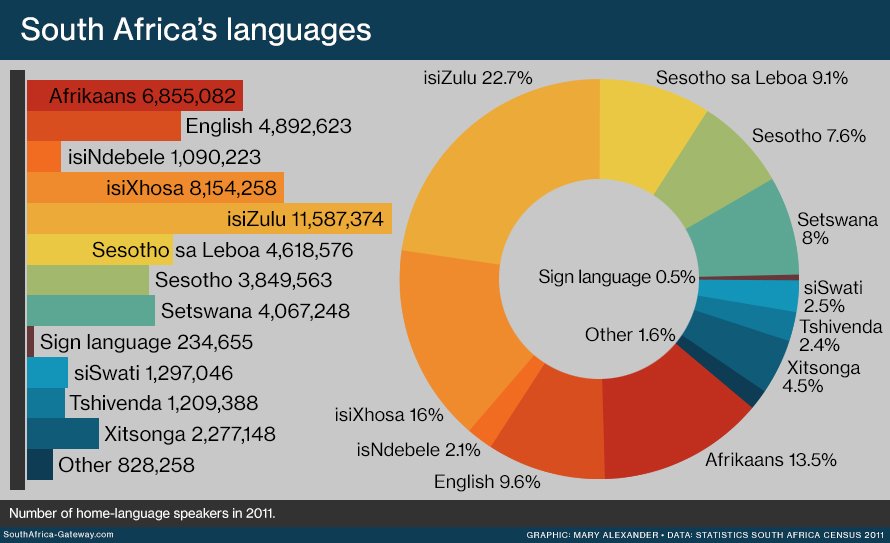In today’s interconnected world, where borders are blurred and opportunities are endless, it comes as no surprise that businesses are increasingly turning their attention to the global marketplace. However, entering new markets successfully requires more than just a great product and an appealing website. It demands a strategic approach that caters to the linguistic diversity of consumers worldwide. This is where the power of multilingual e-commerce SEO shines through. By mastering the art of optimizing your online presence in multiple languages, you can unlock a path to global success like never before. Join us as we delve into the captivating realm of multilingual e-commerce SEO and discover how it can transform your business into an international powerhouse.
Table of Contents
- 1. Navigating the Multilingual SEO Landscape: Strategies for Global Expansion
- 2. The Power of Localized Keywords: Maximizing SEO Impact Across Languages
- 3. Crafting Compelling Multilingual Content: Driving Engagements and Conversions
- 4. Enhancing User Experience in Multilingual E-commerce: Tips for Seamless Navigation and Checkout
- Q&A
- Concluding Remarks

In a world that is becoming increasingly interconnected, unlocking global success in e-commerce has never been more crucial. One key aspect to master is multilingual SEO, which involves optimizing your online store in multiple languages to reach a wider audience and increase your chances of success in international markets.
To help you embark on this exciting journey, here are some essential tips to consider:
1. Localize your keywords: Conduct thorough keyword research in each target language. Remember that direct translations may not always capture the true intent and nuances of the native speakers. Use keyword tools and consult native speakers to ensure your keywords reflect the language and culture of your target market.
2. Tailor your content: Simply translating your website content is not enough. Adapt your content to suit the preferences and characteristics of each target audience. This includes incorporating local idioms, cultural references, and specific products or services that are popular in the region.
3. Optimize meta tags and URLs: Each language version of your website should have unique meta tags and URLs that reflect the targeted keywords. This will help search engines understand and categorize your content more accurately, improving your visibility in local search results.
4. Build backlinks: Establishing a strong network of high-quality backlinks is essential for SEO success, regardless of language. Reach out to influential bloggers and industry experts in each target market to collaborate on guest posts or link-building opportunities. This will not only boost your search engine rankings but also increase your credibility in the eyes of local customers.
5. Monitor and analyze: Regularly track your multilingual SEO efforts to identify areas for improvement and measure your success. Utilize tools like Google Analytics to gain insights into your website’s performance, such as traffic sources, bounce rates, and conversion rates, for each language version.
By mastering the intricacies of multilingual SEO, you can unlock the potential for global success in e-commerce. Remember that perseverance and continuous optimization are key to staying ahead in the dynamic world of online entrepreneurship. Bon voyage on your multilingual SEO journey!
1. Navigating the Multilingual SEO Landscape: Strategies for Global Expansion
When it comes to global success in the ever-evolving world of e-commerce, mastering multilingual SEO is the key. With the rapid growth of digital markets worldwide, tapping into new territories and communicating with diverse audiences has become essential for businesses seeking expansion. But fret not, beginners! We’re here to guide you through the intricate maze of the multilingual SEO landscape, empowering you with strategies that will unlock untapped markets and propel your brand towards global triumph.
1. Understanding the Power of Multilingual SEO
Imagine your brand as a global citizen, speaking the language of every potential customer. Multilingual SEO is your passport to this world, allowing you to optimize your website and outreach initiatives to target specific regions and languages. With effective multilingual SEO, your online presence becomes visible to users worldwide, breaking down language barriers and increasing your chances of conversion. From keyword research to localized content, every step you take in the realm of multilingual SEO brings you closer to captivating a wider audience.
2. Crafting Keywords for International Success
When it comes to SEO, keywords are the foundation. Researching and selecting the right keywords for each target market is crucial for multilingual success. Begin by comparing your source language keywords to those used in your desired expansion regions. Are there differences? Cultural nuances? Local preferences? Tailoring your keywords accordingly will boost your visibility and ensure you’re reaching the right audience.
But don’t stop there! Localize your content by integrating regional modifiers into your keyword strategy. This could include country-specific terms, product variations, or even colloquial phrases commonly used in the target market. Pro tip: Utilize tools such as Google Keyword Planner, Ahrefs, or Semrush to unlock regional keyword insights and discover what drives your target audience’s search behavior.

2. The Power of Localized Keywords: Maximizing SEO Impact Across Languages
When it comes to expanding your e-commerce business globally, one of the most crucial elements to consider is the use of localized keywords. Localization is not just about translating your website content; it’s about tailoring your SEO strategy to target specific regions and languages. By incorporating localized keywords, you can enhance your website’s visibility and ultimately drive more traffic and conversions.
So, how do localized keywords maximize your SEO impact across languages? Let’s explore:
- Relevance: Localized keywords allow you to connect with your target audience by speaking their language. By using words and phrases specific to each language and region, you increase the relevance of your content, making it more likely to appear in relevant search results.
- Competition: While global keywords may have high search volumes, they also come with fierce competition. Localized keywords, on the other hand, generally have lower competition levels. By targeting these keywords, you have a higher chance of ranking higher in search engine results pages (SERPs) and outranking your competitors.
- Understanding User Intent: Localized keywords help you understand the intent of your target audience better. Different languages and cultures may have varying search behaviors and preferences, and by using localized keywords, you can align your content with their specific needs and desires.
- Building Trust: Language is a powerful tool for connecting with audiences emotionally. By using localized keywords, you demonstrate that you understand and value your potential customers’ culture and language. This fosters trust and credibility, making them more likely to engage with your brand and become loyal customers.
As you can see, incorporating localized keywords into your e-commerce SEO strategy is essential for unlocking global success. By understanding the power of localized keywords and their impact across languages, you can position your website for international growth and reach a wider audience.

3. Crafting Compelling Multilingual Content: Driving Engagements and Conversions
In an increasingly globalized world, crafting compelling multilingual content is essential for driving engagements and conversions in the realm of e-commerce. Whether you are a beginner or have some experience in this domain, here are some insights to help you unlock global success by mastering multilingual e-commerce SEO.
1. Speak their language: Speaking directly to your target audience in their native language can significantly boost engagement and conversions. By translating your product descriptions, website content, and advertising campaigns into multiple languages, you can cater to a wider audience and create a more personalized experience for your customers.
2. Localization is key: Localization goes beyond just translating words. It involves adapting your content to specific cultural nuances, idioms, and preferences. Consider how your product or service could be unique in different regions and tailor your content accordingly. This level of personalization shows that you understand and value your customers, leading to increased trust and loyalty.
3. Optimize keywords for each language: Conduct comprehensive keyword research for each language you are targeting to ensure your content is optimized for search engines. Use tools like Google Keyword Planner or SEMrush to identify relevant keywords and phrases that customers in different regions are searching for. By incorporating these keywords naturally into your content, you can improve your website’s visibility and attract organic traffic.
4. Quality over quantity: Remember, when it comes to multilingual content, quality always reigns supreme. Avoid using automated translation tools that produce inaccurate or awkward translations. Instead, invest in professional translators or localization experts who can ensure that your content flows seamlessly while preserving your brand voice.
5. Test and refine: Lastly, never underestimate the power of testing and refining your multilingual content strategy. Monitor the performance of your translated pages, analyze user behavior, and make adjustments based on the insights you gather. Multivariate testing can help you identify what works best for different languages and demographics.
By implementing these strategies, you can harness the power of multilingual content to drive engagements and conversions in the fast-paced world of e-commerce. Remember, it’s all about speaking your customers’ language, understanding their needs, and delivering an exceptional experience that transcends borders.
4. Enhancing User Experience in Multilingual E-commerce: Tips for Seamless Navigation and Checkout
In today’s interconnected world, reaching a global audience is crucial for the success of any e-commerce business. Unlocking this global success begins with mastering multilingual e-commerce SEO. Once you have optimized your website for different languages, it’s time to focus on enhancing the user experience to ensure seamless navigation and checkout.
1. Streamline your website navigation: A cluttered and confusing website can be a major turnoff for users, especially those who speak different languages. Ensure that your website has a clear and intuitive navigation menu, with easily identifiable categories and subcategories. This will make it easier for users to find what they are looking for, regardless of their language proficiency. Include language-specific labels for each category to create a personalized experience for your users.
2. Implement language switch options: To cater to your multilingual audience, provide a language switch option prominently on your website. This will allow users to switch between languages with ease, making navigation and understanding the content hassle-free. Make sure to use recognizable language flags or labels for easy identification. Additionally, consider adding a language auto-detect feature that automatically displays the website in the user’s preferred language based on their browser settings. This small feature can greatly enhance the user experience and make your website more welcoming for international visitors.
By implementing these tips, you can ensure that your multilingual e-commerce website offers a seamless user experience, boosting customer satisfaction and increasing sales. Remember, a satisfied customer is more likely to become a loyal customer, so investing in user experience enhancements is a worthwhile endeavor for any e-commerce business.
Q&A
Q: Why is multilingual SEO important for e-commerce success in today’s global market?
A: In a world interconnected by the internet, targeting international customers is crucial for e-commerce success. Multilingual SEO ensures that your website ranks high on search engines in different languages, enabling you to tap into new markets and increase your global reach.
Q: How does multilingual SEO drive traffic to e-commerce websites?
A: Multilingual SEO optimizes your website’s content for different languages and cultures, making it more accessible to international users. By using relevant keywords and phrases in different languages, your website can attract organic traffic from users searching in those languages, ultimately increasing your web visibility and driving potential customers to your e-commerce site.
Q: What are the key benefits of implementing multilingual SEO strategies?
A: Implementing multilingual SEO strategies can provide numerous benefits for e-commerce businesses. Firstly, it allows you to establish a strong online presence in various markets, increasing brand awareness and recognition. Additionally, targeting specific keywords in different languages enhances your website’s visibility to potential customers, resulting in higher conversion rates and ultimately driving sales.
Q: How does multilingual SEO enhance user experience for international customers?
A: Multilingual SEO ensures that your website is not only accessible in different languages but also tailored to specific cultures. By providing localized content, user-friendly navigation, and currency/language customization options, international customers feel more comfortable and engaged with your e-commerce platform. This enhanced user experience strengthens customer trust, leading to increased customer satisfaction and repeat purchases.
Q: What are the challenges and considerations when implementing multilingual SEO for e-commerce?
A: While implementing multilingual SEO can be highly beneficial, it does come with its challenges. Some key considerations include translating content accurately, adapting keywords to suit the target audience, and understanding cultural nuances. Additionally, managing multiple language versions of your website and ensuring consistent updates across all of them can pose logistical challenges. It’s essential to invest in professional translation services and stay up to date with SEO trends in different markets.
Q: How can e-commerce businesses effectively localize their content for different markets?
A: E-commerce businesses can effectively localize their content by conducting thorough market research and understanding their target audience’s preferences and cultural differences. This includes adapting product descriptions, visuals, and even payment methods in order to provide a personalized experience. Collaborating with native speakers and utilizing professional translation services is crucial in ensuring accurate translations and culturally relevant content.
Q: What role does keyword research play in multilingual SEO for e-commerce?
A: Keyword research is fundamental in multilingual SEO for e-commerce. It helps businesses identify the most relevant and popular search terms in different languages, enabling them to optimize their content accordingly. Understanding how users search for products/services in different markets helps e-commerce platforms tailor their website to meet the specific demands of each target audience, ultimately driving organic traffic and boosting conversion rates.
Q: How do social media and multilingual SEO complement each other in e-commerce?
A: Social media platforms offer businesses an incredible opportunity to connect with international customers and promote their brand. By incorporating multilingual SEO into social media strategies, businesses can reach a wider audience and drive traffic to their e-commerce website. Optimizing social media posts, hashtags, and captions with relevant keywords and phrases in different languages helps increase visibility and engagement, thus strengthening the overall online presence of the e-commerce brand.
Q: How can I measure the success of my multilingual SEO efforts for e-commerce?
A: Measuring the success of multilingual SEO efforts is crucial for continuous improvement. Key performance indicators (KPIs) such as organic traffic, conversion rates, and keyword rankings can be measured using analytics tools. Tracking engagement metrics, customer feedback, and monitoring sales across different markets also provide valuable insights into the effectiveness of your multilingual SEO strategies. Regularly analyzing and adjusting your approach based on data will help you unlock global success in e-commerce.
Concluding Remarks
In the exhilarating realm of multilingual e-commerce, where borders dissolve and opportunities abound, mastering the art of SEO can be your key to unlocking unparalleled global success. By seamlessly merging the complexities of language with the power of digital marketing, your online presence can transcend geographical limitations, resonate with diverse audiences, and elevate your brand to unprecedented heights.
As we bid adieu to this journey through the intricate world of multilingual e-commerce SEO, we hope that you’re leaving with a newfound understanding of its transformative potential. From unraveling the intricacies of keyword research in foreign languages to optimizing your website’s architecture for seamless navigation across cultures, you have delved deep into the fascinating nuances lying at the intersection of languages and online commerce.
Remember, in this global marketplace, proficiency in language is an invaluable asset that allows you to cultivate meaningful connections with customers from various corners of the world. It’s a way to forge trust, build credibility, and ultimately cultivate a loyal customer base that transcends borders. So, seize the opportunity to engage with your international audience in their native tongues, delivering a personalized experience that resonates on a deeper level.
As you embark on your quest for global success, always keep in mind the ever-evolving nature of SEO. Stay informed about the latest linguistic trends, adapt your strategies to the idiosyncrasies of each culture, and be ready to refine your approach as you navigate the ever-shifting digital landscape.
At the crossroads of language diversity and e-commerce lies an endless realm of possibilities. So, embrace the challenge, push the boundaries, and let the power of multilingual SEO catapult your brand towards unprecedented growth. May your online ventures be enriched by the diversity of languages and cultures, and may your success transcend the limitations of geography.
Now, armed with the knowledge and insights gained from this exhilarating exploration, go forth and conquer the world of multilingual e-commerce with a strategy tailored for global triumph. Unleash your creative spirits, adapt to the ever-changing digital landscape, and embark on a journey that will lead your brand to the pinnacles of success.
Remember, embracing linguistic diversity isn’t just about boosting your SEO rankings—it’s about fostering connections, forging relationships, and creating a digital world that celebrates the rich tapestry of cultures. And with that, we bid you farewell on your quest towards mastering multilingual e-commerce SEO.

